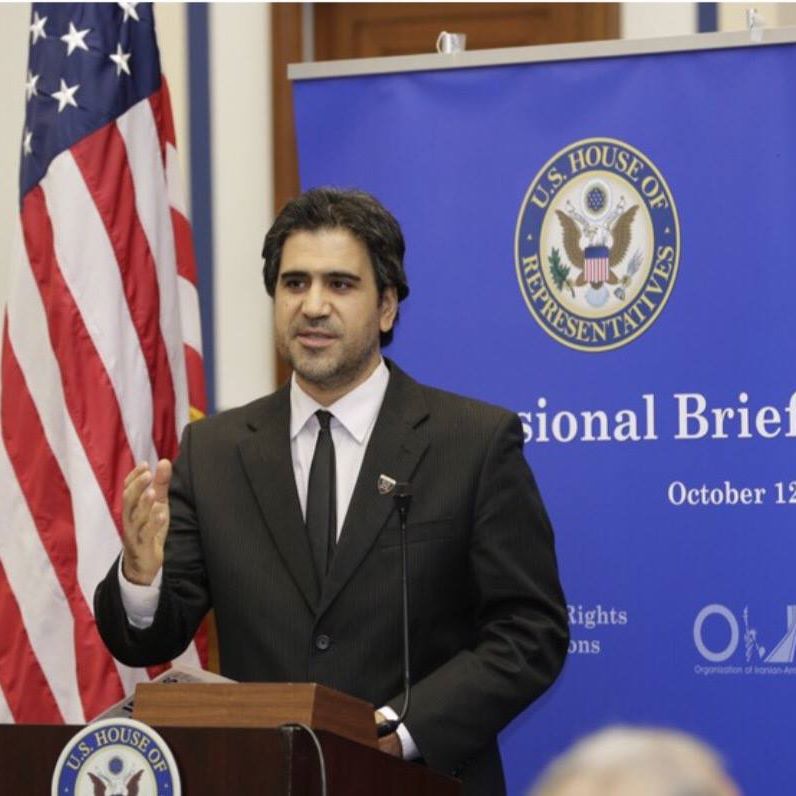Mullahs’ policies exacerbating Iran’s financial crisis
د. ماجد ربيزاده/ سياسات الملالي تفاقم الأزمة المالية الإيرانية
Dr. Majid Rafizadeh/Arab News/November 08/18
The Iranian leaders continue to project a picture that their country is not facing any economic crisis. Supreme Leader Ali Khamenei recently declared that the Islamic Republic would be one of the most powerful economies in the world over the next five decades. President Hassan Rouhani also famously stated that, over the next three decades, Iran could become one of the top 10 economies in the world. This is an attempt to project power and economic stability to the rest of the world.
But such rhetoric contradicts the reality on the ground. The fact is that the Iranian regime has created the worst economic crisis the nation has faced in many decades.
Iran’s economy is officially in recession, according to the International Monetary Fund. Its national currency, the rial, has dropped to historic lows — one US dollar, which equaled approximately 35,000 rial in November last year, is now worth nearly 150,000.
Although Iran has an educated youth population, almost 30 percent of them cannot find jobs. In some provinces, the unemployment rate is over 60 percent. According to an official representative of the regime’s Planning and Management Organization, “42 percent of unemployed people in Iran have a university degree, and huge sums of money have been spent on their education.”
The unemployment rate among university-educated women is much higher than that of men, hovering near 80 percent in some provinces, and approximately 70 percent in others.
In addition, more than 40 percent of the population, or approximately 32 million citizens, live below the poverty line.
Widespread corruption and economic mismanagement has also led to food shortages in many Iranian cities. In some provinces, such as Sistan and Baluchistan, more than 75 percent of the population is currently struggling with food shortages and a lack of drinking water. This will inevitably result in an unprecedented health crisis.
The main underlying problems lie in the fact that Iran’s large wealth is not being redistributed among the nation. Instead, it has been monopolized by the theocratic establishment and spent on financing terror and militia groups.
Meanwhile, inflation is on the rise. In April, inflation was 7.9 percent, but by September it had rocketed to 31.4 percent. While salaries and wages have generally remained the same, the price of commodities, food, housing and rent have soared, making it extremely difficult for many people to afford basic necessities.
The average cost of living in Iran is roughly half of the average cost of living in the US, with the living expenses for one person costing roughly $6,500 a year. But the average salary of an Iranian family is only around $1,900 dollars a year, according to Iran’s official figures.
That is why the economy has been forcing people to take to the streets and revolt against the regime. They have been chanting: “Reformists, hard-liners, the game is over now;” “Leave Syria alone, think about us instead;” “Death to Hezbollah;” and “Forget Gaza, forget Lebanon, I’d give my life for Iran.”
Protests in Iran are regular occurrences as the economy continues to worsen. Currently, Iranian teachers have joined other groups, such as truck drivers, merchants, traders and shopkeepers in Tehran’s Grand Bazaar, by going on a nationwide strike in order to protest poor economic conditions.
Iran’s economy ought to be one of the strongest in the world. With approximately $27.3 trillion of natural resources and it being the 18th-largest country in the world when ranked by purchasing power parity, Iran is considered one of the globe’s richest countries. It has the world’s second and fourth-largest gas (with a value of nearly $12 trillion) and oil (worth nearly $17 trillion) reserves, respectively.
But the main underlying problems lie in the fact that the nation’s large wealth is not being redistributed among the nation. Instead, it has been monopolized by the theocratic establishment and spent on financing terror and militia groups, pursuing military adventurism in the region, boosting the power of the Islamic Revolutionary Guard Corps (IRGC) and further enriching the gilded circle of the ruling politicians. It is worth noting that Khamenei’s financial empire is currently proven to be worth at least $95 billion.
In a nutshell, Iran’s economy is facing its worst crisis in decades. The recent US sanctions against the regime, alongside the Iranian leaders’ unwillingness to redistribute the nation’s wealth, battle financial corruption, halt terror financing, cease money laundering, or make fundamental reforms within its economy, only mean that Iran’s economy will continue its downward spiral.
As long as the mullahs and the IRGC rule over Iran with an iron fist, the Iranian people’s economic conditions will most likely continue to deteriorate.
*Dr. Majid Rafizadeh is a Harvard-educated Iranian-American political scientist. He is a leading expert on Iran and US foreign policy, a businessman and president of the International American Council. Twitter: @Dr_Rafizadeh
http://www.arabnews.com/node/1401431






















